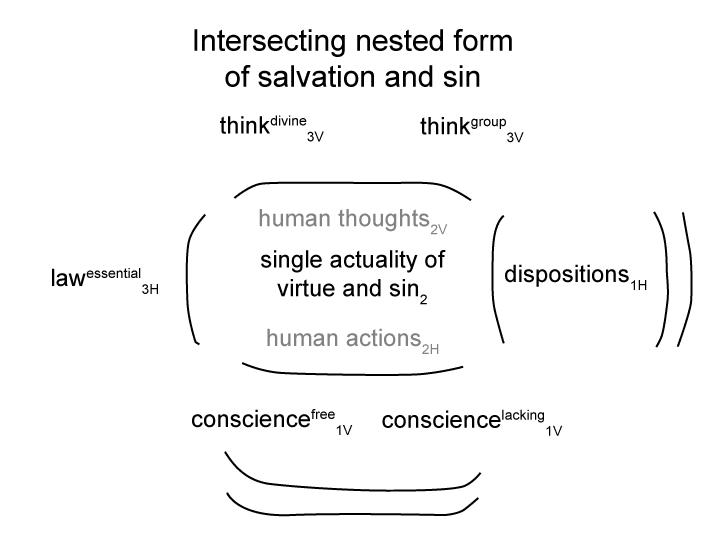Summary of text [comment] page 47
Schoonenberg opens chapter 1, section 7, with a list. These are the topics that he has covered so far. These topics constitute an essential definition of “sin”.
Let me go through the points one by one.
Sin is an opposition to God’s salvific activity and to His creation, hence a crime against the world and against humans.
[This can be portrayed by the formalism of the intersecting nested forms for “the message underlying the word ‘religion'”.
Sin is at the core of any mob or conspiracy:
thinkgroup3V( sin2( consciencelacking1V)).
Sin is in opposition to God’s salvific activity:
thinkdivine3V( virtue2( consciencefree1V))
Opposition to His creation is a crime against the world and fellow humans. That crime is captured by:
lawessential3H( sin or virtue2( dispositions1H))]

